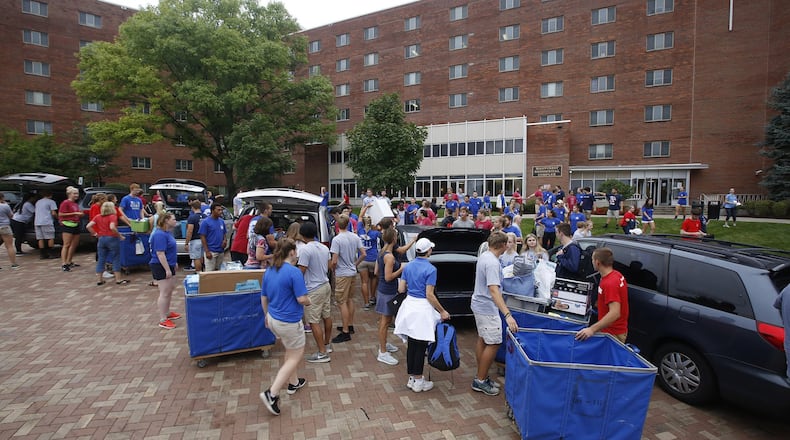Many schools like Ohio State and the University of Dayton have a final application deadline around Feb. 1, while others including Wright State, Central State and Wilmington offer rolling admissions all the way until August.
EDUCATION: See where top local 2018 graduates went to college
But college admissions counselors point out the importance of knowing all of the deadlines at their schools, which in some cases can be as early as Nov. 1. Ohio State tells students it “strongly recommends” applying by Nov. 1 each year to be considered for certain scholarships and special programs.
Even schools with very late deadlines encourage students to submit the Free Application for Federal Student Aid (FAFSA) early to be eligible for all possible aid. Wright State sets its “priority deadline” to file the FAFSA as Jan. 8.
What colleges want
Cara Cannarozzi, a Fairmont High School senior who included some elite schools among her eight applications, said she’s written more than 30 essays and mini-essays in the past few months.
“What stood out to me was how different each college’s application was,” Cannarozzi said. “For UD, I didn’t have to fill out any extra essay. For Yale, there were like 10 different responses from 50 words to 250 words.”
RELATED: Graduation rules about to change for HS seniors
Fairmont Counseling Department Chair Nicole Will said more and more colleges are using the same Common Application, including Wright State for the first time this year. But many higher-echelon schools use their own writing prompts to distinguish between growing numbers of strong applicants.
Will said another trend is colleges seeking students who have a “depth, not just breadth, of experiences.”
“So rather than being in 12 different activities where students are only getting basic experiences, they would like to see them get more deeply involved in the activities where they are most passionate by taking on a leadership role, helping recruit other students and more,” Will said.
College costs
The cost of college is a concern for almost all families, with about two-thirds of Ohio college graduates taking on student loan debt, at an average close to $30,000 per borrower.
But for the very top students, the door to some of the nation’s elite universities has opened wider in recent years. Yale and much of the Ivy League, as well as Stanford, Vanderbilt and several others, now promise to cover all of a student’s “demonstrated financial need” without loans.
RELATED: Historically low ACT scores called “red flag”
Few students get in, but they get out with less debt. Notre Dame, with a sticker cost of more than $65,000 per year, advertised that families making $80,000 to $100,000 paid a median cost of $18,695 for their freshmen, which is less than the sticker cost of tuition, room and board at Ohio public universities ($21,000 to $29,000).
Durkle, the University of Dayton dean, encouraged families to look at the four-year total cost of any school, taking into consideration annual tuition increases, fees and books. UD is among the schools touting a four-year guarantee, where students know their costs won’t rise from year to year.
“It’s also important to understand your out-of-pocket cost, knowing that student loans are dollars you will have to pay back while grants and scholarships are not repaid,” Durkle said.
Finding right fit
Becca Krieger, a Fairmont senior, said a few years ago she was sure she wanted to go far away to college. She said the college search was overwhelming at first given all of the options, and now she’s 90 percent sure she’ll go to Sinclair Community College before transferring to a four-year school.
“With so many options and so many scholarships out there, it’s a lot to take in,” said Krieger, who wants to be a nurse. “Through interviewing (people in) different occupations, I narrowed it down to what I want to do. It’s about exploring things and not having a closed mind about what I want to do and where I want to go.”
RELATED: Sinclair eyes changes to nearby downtown streets
RELATED: UD president’s contract renewed for five years
Krieger and Cannarozzi said everything from cost to academic programs to the vibe they got from campus visits affected where they applied, and both encouraged students to be open-minded about the process.
Will said Krieger’s experience – balancing career tech classes in allied health with Advanced Placement classes in math and English – is an example of schools not pigeon-holing students only toward college or only toward a trade.
“Making students future-ready is working to develop an individualized plan that focuses directly on the students’ future goals and career aspirations and then working to develop a plan that is going to help the student reach those goals,” Will said.
“For some students this will be college, but for others it might be apprenticeship programs, military, or licensure programs. As high schools, our job is to prepare our students for what comes next.”
About the Author

